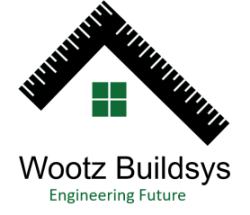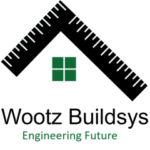In today’s fast-paced construction industry, time, efficiency, and cost-effectiveness are critical factors for any project. Traditional construction methods often struggle to meet these demands, leading developers and businesses to explore innovative solutions. Among these, the PEB building—short for Pre-Engineered Building—has emerged as a revolutionary alternative that is reshaping the way structures are designed and built.
But what exactly is a PEB building, and why is it becoming so popular across industries? Let’s dive deep into its features, benefits, and applications.
Understanding a PEB Building
A PEB building (Pre-Engineered Building) is a structure that is designed, fabricated, and assembled using factory-manufactured components. Unlike conventional construction where materials like cement, sand, and bricks are assembled on-site, PEB buildings are mostly manufactured off-site in a controlled factory environment. Once fabricated, the components are transported to the site and quickly erected with bolted connections.
The concept revolves around customization, efficiency, and speed. Every building is designed to meet specific project requirements such as size, load-bearing capacity, and usage. With computer-aided design (CAD) and modern engineering software, the entire process ensures precision, quality, and reduced construction timelines.
Key Features of a PEB Building
A PEB building stands out from traditional structures due to its unique set of features:
- Pre-Engineered Design
- Each component is pre-designed using advanced engineering methods to meet structural and functional requirements.
- Reduces on-site errors and ensures accurate alignment during installation.
- Each component is pre-designed using advanced engineering methods to meet structural and functional requirements.
- Factory-Fabricated Components
- Steel frames, wall panels, and roof sheets are manufactured in a factory setting, ensuring high quality and consistency.
- Components are pre-punched, pre-cut, and ready for assembly.
- Steel frames, wall panels, and roof sheets are manufactured in a factory setting, ensuring high quality and consistency.
- Modular and Flexible
- PEB buildings are modular in nature, allowing for extensions or modifications in the future.
- Customizable designs cater to specific needs like warehouses, showrooms, factories, or even residential spaces.
- PEB buildings are modular in nature, allowing for extensions or modifications in the future.
- Lightweight but Strong
- Despite using lightweight steel sections, PEB structures are engineered to withstand heavy loads, wind, and seismic conditions.
- Despite using lightweight steel sections, PEB structures are engineered to withstand heavy loads, wind, and seismic conditions.
- Energy-Efficient Materials
- Insulated panels, reflective coatings, and eco-friendly materials reduce energy consumption in heating or cooling.
Benefits of Choosing a PEB Building
Opting for a PEB building comes with numerous advantages that make it a preferred choice for modern construction projects:
1. Cost-Effectiveness
- Reduced material wastage due to precise fabrication.
- Lower labor costs since most of the work is done in the factory.
- Shorter project timelines help cut overhead costs.
2. Faster Construction
- On-site assembly is significantly quicker compared to conventional methods.
- Buildings can be completed in weeks instead of months.
3. High Quality and Durability
- Manufactured under strict quality control in factories.
- Steel structures are resistant to termites, rot, and fire, ensuring long-term durability.
4. Eco-Friendly Solution
- PEB buildings generate less construction waste.
- Recyclable steel and energy-efficient panels make them a sustainable choice.
5. Design Versatility
- Can be tailored to suit industrial, commercial, or residential needs.
- Offers flexibility in layout, dimensions, and aesthetics.
6. Ease of Maintenance
- Minimal maintenance required compared to conventional RCC (Reinforced Cement Concrete) structures.
- Longer lifespan with less upkeep.
Applications of PEB Buildings
The versatility of PEB buildings makes them suitable for a wide range of applications across sectors. Some of the most common uses include:
- Industrial Buildings
- Factories, warehouses, and workshops rely heavily on PEB structures for large clear spans and quick construction.
- Factories, warehouses, and workshops rely heavily on PEB structures for large clear spans and quick construction.
- Commercial Spaces
- Shopping malls, showrooms, office complexes, and cold storage facilities often use PEB designs due to their flexibility and energy efficiency.
- Shopping malls, showrooms, office complexes, and cold storage facilities often use PEB designs due to their flexibility and energy efficiency.
- Institutional Projects
- Schools, colleges, and hospitals can benefit from quick construction timelines and cost savings.
- Schools, colleges, and hospitals can benefit from quick construction timelines and cost savings.
- Agricultural Structures
- PEB buildings are widely used for farmhouses, storage sheds, dairy farms, and greenhouses.
- PEB buildings are widely used for farmhouses, storage sheds, dairy farms, and greenhouses.
- Infrastructure Projects
- Airports, metro stations, bus terminals, and railway stations often utilize PEB structures due to their ability to cover large spans without columns.
- Airports, metro stations, bus terminals, and railway stations often utilize PEB structures due to their ability to cover large spans without columns.
- Residential Buildings
- With growing interest in modular and prefabricated housing, PEBs are increasingly used for cottages, villas, and housing projects.
Why PEB Buildings Are the Future of Construction
The construction landscape is evolving, and PEB buildings are at the forefront of this transformation. With urbanization, industrial growth, and the need for sustainable infrastructure, developers and architects are leaning toward solutions that are efficient, cost-friendly, and environmentally responsible.
Compared to conventional RCC structures, PEB buildings offer unmatched advantages in terms of speed, quality, and adaptability. As more industries recognize the value of these modern structures, the demand for PEBs is set to grow exponentially in the coming years.
Conclusion
A PEB building is more than just a construction method—it’s a smarter way of building for the future. From factories and warehouses to schools, hospitals, and even homes, PEB structures are proving their worth across every sector. With their unique features, significant cost savings, and wide applications, PEB buildings are redefining how we approach modern construction.
If you’re planning your next project, considering a PEB building could be the key to faster completion, better quality, and long-term savings.
Frequently Asked Questions (FAQs)
1. What does PEB mean in construction?
PEB stands for Pre-Engineered Building, a modern construction method where steel structures are designed, fabricated, and assembled using factory-made components. This process makes construction faster, more cost-effective, and more precise compared to traditional building methods.
2. How long does it take to build a PEB building?
The construction timeline of a PEB building is significantly shorter than conventional methods. Depending on the size and complexity, a PEB structure can be completed in just a few weeks, whereas traditional buildings may take several months or even years.
3. Are PEB buildings durable and safe?
Yes, PEB buildings are highly durable and safe. They are designed to withstand heavy loads, harsh weather, seismic activities, and corrosion. With proper maintenance, a PEB structure can last for decades without major repairs.
4. What are the main uses of a PEB building?
A PEB building is widely used in industrial, commercial, institutional, agricultural, and residential projects. Common applications include warehouses, factories, showrooms, schools, hospitals, farmhouses, and even airports.



